From a gorilla tenderly embracing its caretaker to a black grouse’s sensational mating ritual, this year’s BigPicture: Natural World Photography Competition-winning images represent the best nature photography around the world.
Over 6,500 submissions were entered by world-class photographers from 67 countries with the goal to showcase Earth’s biodiversity, as well as some of the mounting threats to the natural world.
This year’s grand prize-winning image was captured by photographer Audun Rikardsen of Tromsø, Norway.
These images originally appeared on bioGraphic, an online magazine about science and sustainability and the official media sponsor for the California Academy of Sciences' BigPicture: Natural World Photography Competition.
Scroll down into a world of wonder...
(Please click on the images for a full-screen resolution)
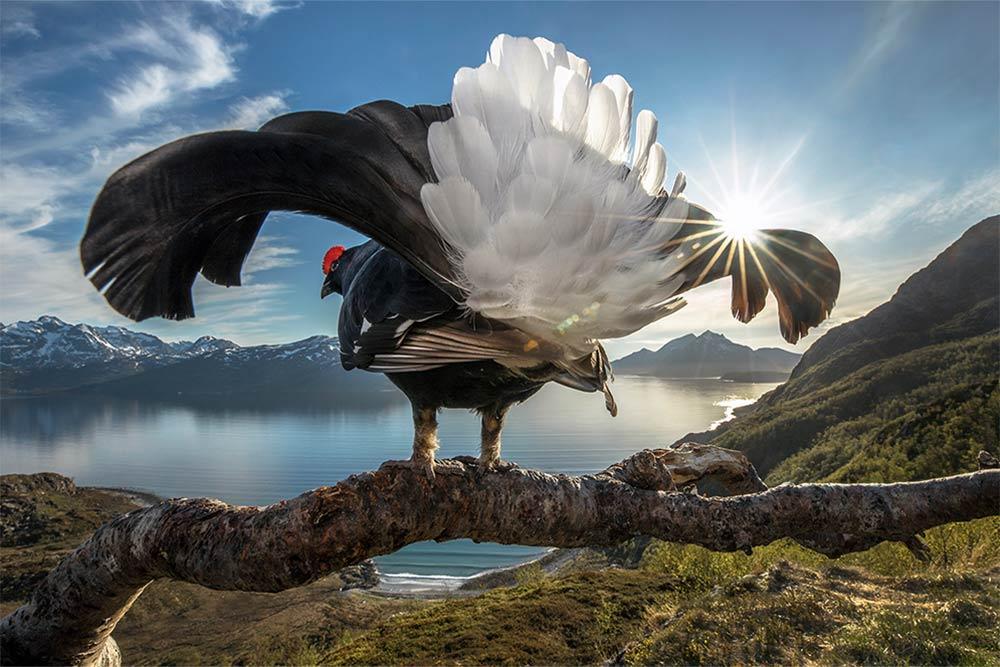
While the beauty of Norway's spectacular northern coastline might be lost on this male black grouse (Tetrao tetrix), the prime vantage point offered by its perch is certainly not. For a ground-dwelling bird known for exuberant territorial displays during the breeding season, what better place to see and be seen than this branch, which provides an eagle's-eye perspective of the terrain below. What initially drew photographer Audun Rikardsen to this spot high above the sea was, in fact, a resident golden eagle (Aquila chrysaetos) that frequented the perch. Having constructed a blind nearby, Rikardsen spent many frigid winter days photographing the eagle. But by spring, it had been replaced by a new subject: a black grouse in proud display. Not only did the grouse quickly become accustomed to Rikardsen's rapidly firing camera shutter and flash, he says, it was almost as if the bird enjoyed being in the spotlight.
Photograph: Audun Rikardsen/BigPicture Photography Competition
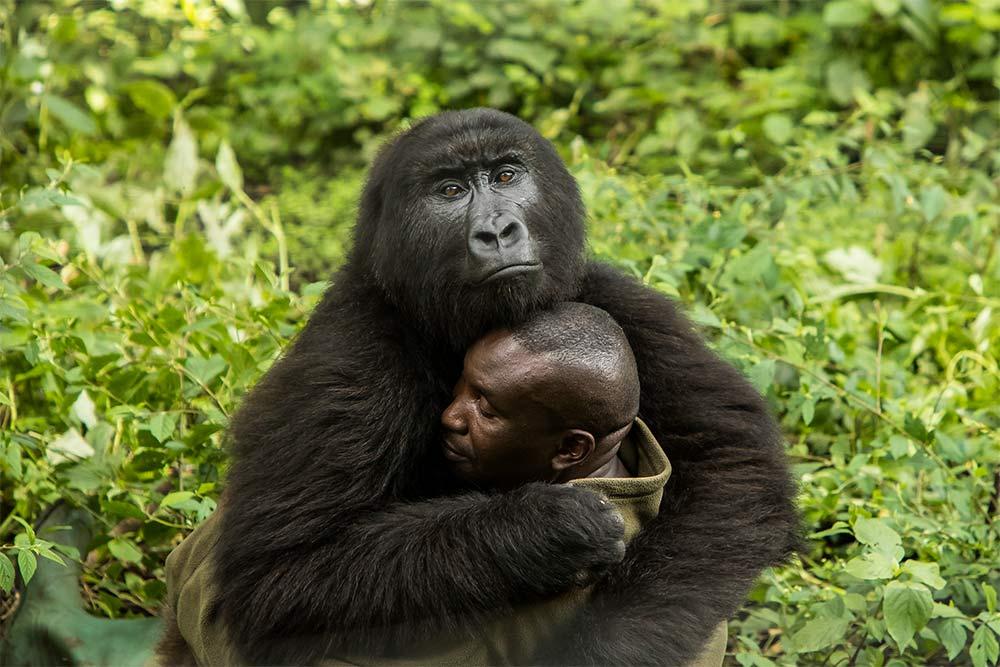
It's no exaggeration to say that Andre Bauma, the head caretaker at the Senkwekwe Center for orphaned gorillas in Virunga National Park, risks his life daily for the animals in his care. Bauma is raising the orphans with the goal of eventually releasing the animals back into the park. In the meantime, though, the gorillas treat Bauma and his team as their family. "While I was watching from a distance," says photographer James Gifford, "one of Andre's charges enveloped him in a hug, giving me the chance to capture their remarkable relationship. I have never before witnessed such a close and natural bond between any wildlife species and a human."
Photograph: James Gifford/BigPicture Photography Competition
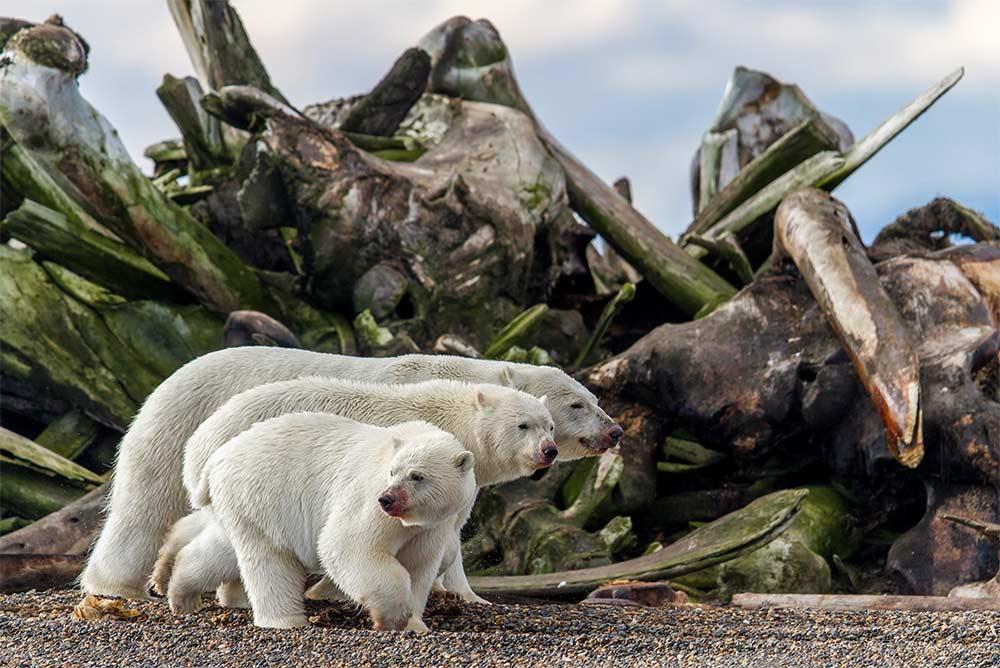
A trio of polar bears (Ursus maritimus) lumbers past a forbidding pile of whale bones along the coast of Barter Island in northern Alaska, their bloodstained noses hinting at a recent, fresher meal. As top predators, polar bears rule the Arctic ecosystem and are typically solitary hunters, except when learning from mom, like the siblings pictured here. But these epic hunting grounds may not stay pristine forever: The region holds an estimated 7.7 billion barrels of recoverable oil. Moreover, climate change is forcing the bears to travel much longer distances in search of food. For this trio, however, there's a more imminent threat. The smallest in the trio turns to catch a glimpse of a large male following the group before all three slip into the still chilly, though warming, waters of the Beaufort Sea.
Photograph: Daniel Dietrich/BigPicture Photography Competition
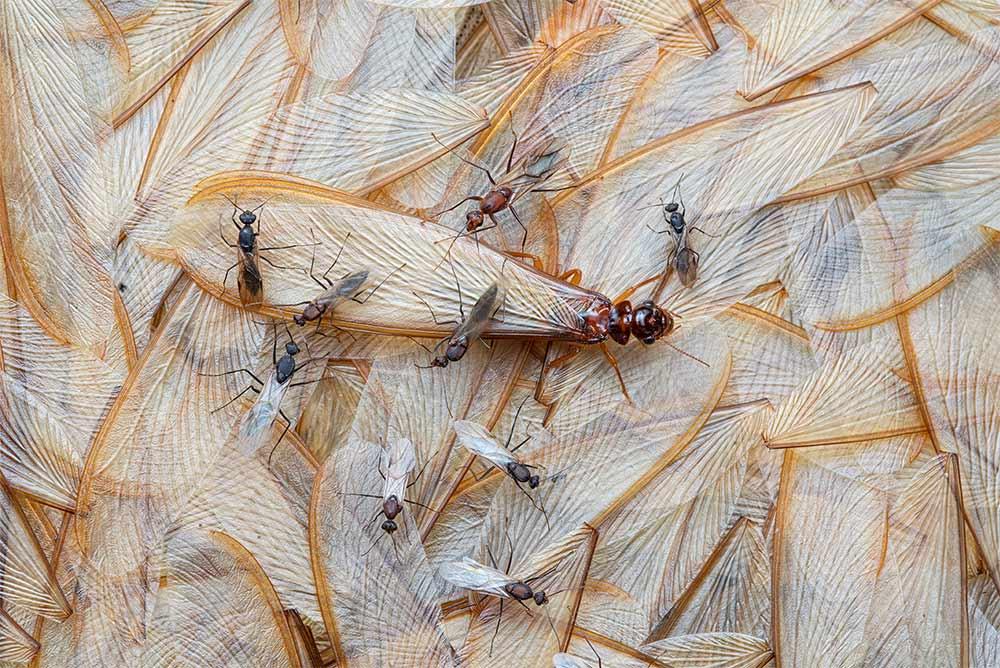
Most mound-building termites in sub-Saharan Africa are eyeless, wingless, subterranean creatures. But once a year, termite queens produce winged offspring that are destined for a different existence. When the first heavy rains mark the end of the dry season, millions of these ecosystem engineers make a dramatic appearance, emerging en masse in a synchronized, if short-lived, nuptial flight.
Photograph: Piotr Naskrecki/BigPicture Photography Competition
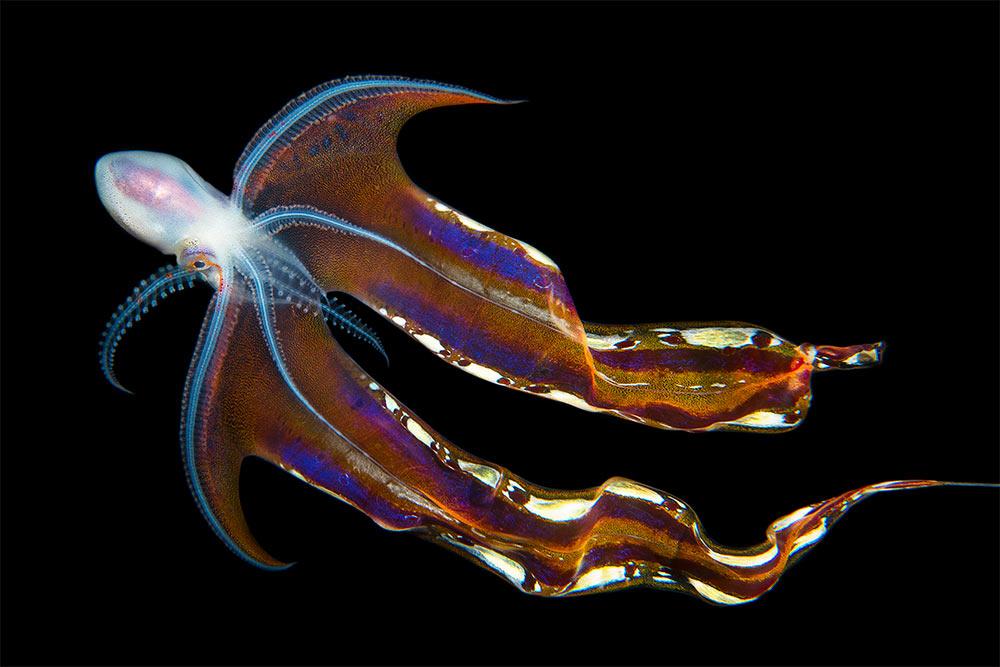
Looking lavish and looming large are key survival strategies for this female palmate octopus (Tremoctopus gracilis). While males of the species are dwarves, measuring only about 15 millimetres (less than an inch) in length, fully grown females often stretch up to 2 metres (6.6 feet), trailing eye-catching membranes from two of their elongated arms as they cruise the open ocean. When threatened, a female will extend her skirt-like membrane and wave it like a billowing banner. This dramatic display increases the size of her silhouette and is often enough to deter predators. In the face of a fiercely determined attacker, however, the octopus can quickly detach parts of her membrane along visible "fracture" lines and send a distracting chunk spiraling through the water like a bullfighter's cape, giving her time to make her escape.
Photograph: Jinggong Zhang/BigPicture Photography Competition
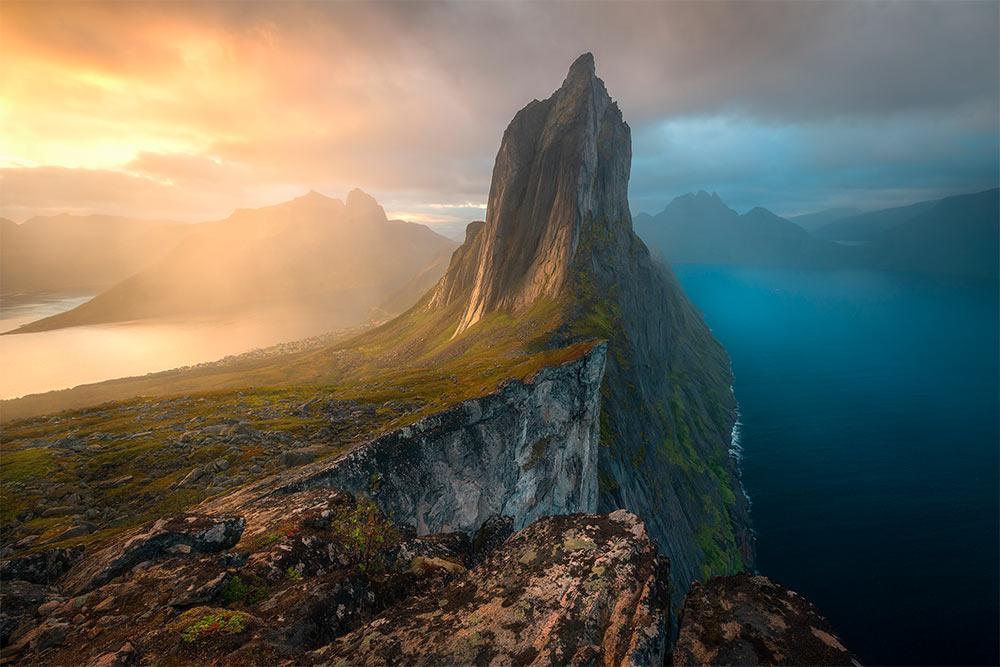
Although it's not the country's best-known destination, Norway's Senja Island is quickly growing in popularity. One mountain in particular is largely responsible for that fame. Towering nearly 650 metres (2,100 feet) above the sea, Segla is a peak that epitomises the ruggedness and wildness of northern Norway. Here, reindeer still roam the tundra while humpback whales, orcas, and sea eagles pursue herring along narrow fjords. Until recently, these ecosystems, which provide sustenance and safe haven for wildlife as well as livelihoods for many Norwegians, were at risk from a fossil fuel industry seeking another kind of bounty. Then, in April of this year, Norway's Labour Party, the country's parliamentary majority, surprised many by committing to permanently protect Senja and nearby islands and waterways in the Norwegian Arctic from oil drilling and exploration -- a move that promises to keep these wild places wild for generations to come.
Photograph: Armand Sarlangue/BigPicture Photography Competition
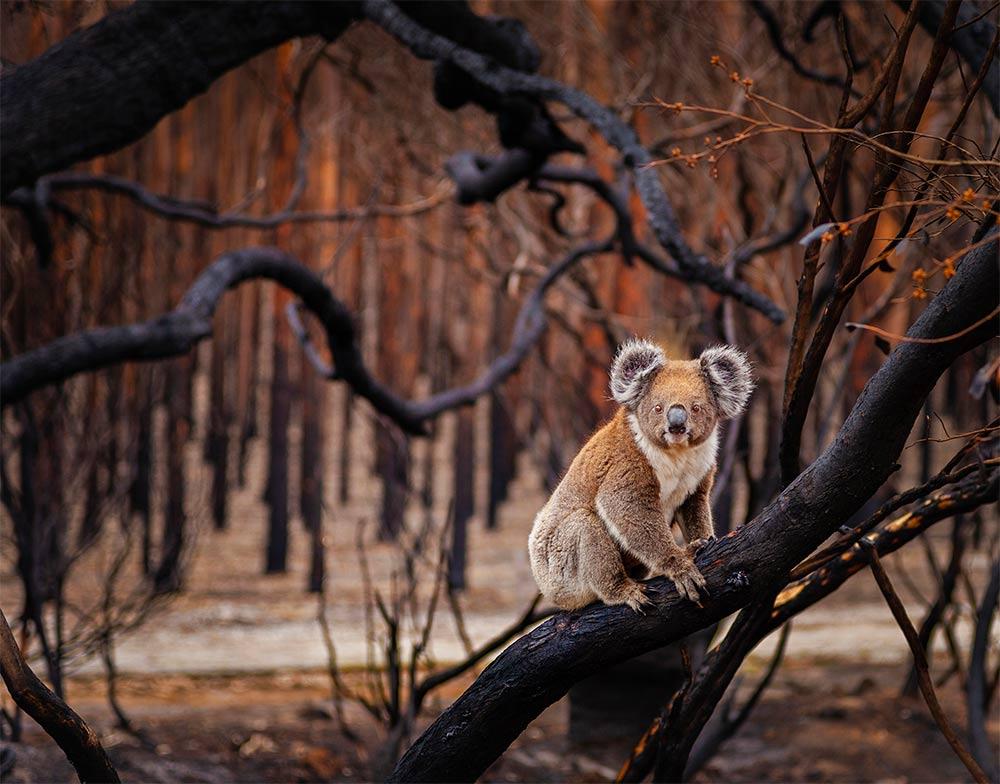
In 2018, Australia experienced its third-hottest year on record -- temperatures that, coupled with historic droughts, created prime conditions for bushfires. For slow-moving koalas (Phascolarctos cinereus), the odds of surviving fast-burning blazes like these are slim. Which made photographer Julie Fletcher's discovery on this day all the more surprising. Having set out to document the desolate, fire-ravaged forests on Kangaroo Island off South Australia, Fletcher watched as the determined koala, its fur tinged burnt sienna, climbed a tree and began to munch charred, crispy leaves. "He was watching me the whole time," she says, "with an intensity that told the story."
Photograph: Julie Fletcher/BigPicture Photography Competition
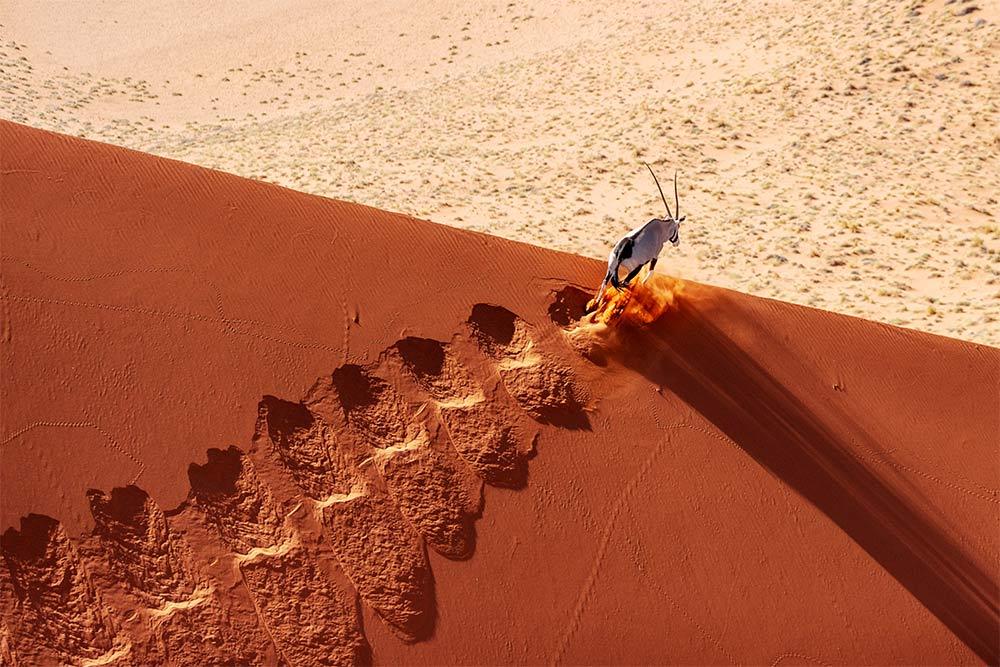
In the Namib-Naukluft Desert of Namibia, a gemsbok (Oryx gazella) sends a spray of fine sand cascading down the sheer flank of a rust-red dune. Although the ascent is strenuous and the sun blazing hot, relief awaits at the top. Along the ridgeline, the antelope will find a cool, moist inland breeze blowing in from the nearby Atlantic Ocean. By simply inhaling this cooler air through its convoluted nasal passages, the animal is able to reduce the temperature of the blood destined for its brain, helping the desert dweller avoid overheating in this otherwise relentless environment.
Photograph: Buddy Eleazer/BigPicture Photography Competition
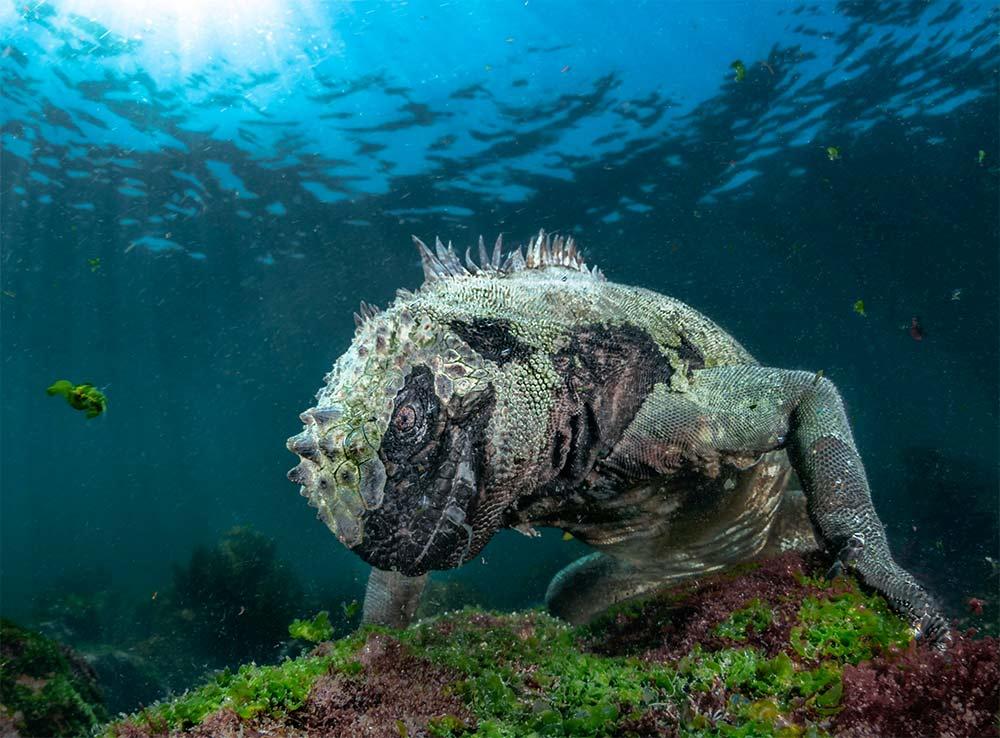
The bottom of the ocean seems like an unlikely place for a lizard to find itself. In fact, marine iguanas (Amblyrhynchus cristatus) of the Galápagos Islands are the only lizards to venture beneath the waves -- and they make a habit of it. With food options scarce along the islands' volcanic coastlines, marine iguanas have evolved to forage at sea. Diving to depths of up to 25 metres on a single breath, they graze on algae that grows in the cold, nutrient-rich waters here. A carpet of healthy green and red algae like that seen in this image by Pier Mane makes the dive itself and the time spent sunbathing on the shore to regain body heat worthwhile.
Photograph: Pier Mane/BigPicture Photography Competition
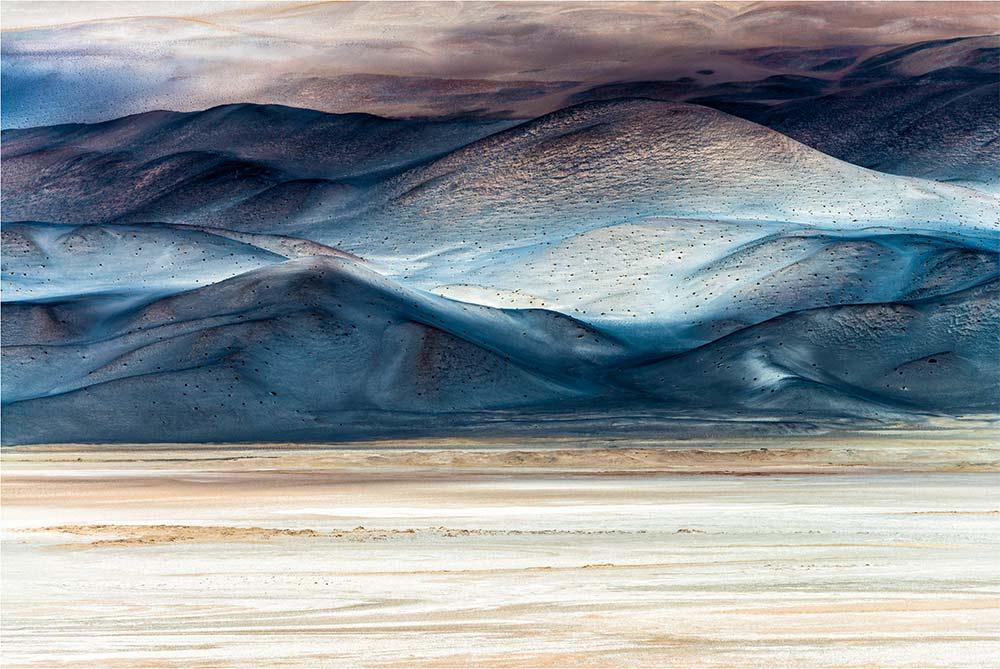
On the high plains of northwestern Argentina, photojournalist Chiara Salvadori encountered a truly magical scene. Standing at an elevation of 3,900 metres (12,795 feet) surrounded by the stark beauty of the Salar de Antofalla, one of the world's largest salt pans, she watched as the landscape's colours changed and were shaped by the shadows of clouds that flowed fast overhead. One of the things that stood out most to Salvadori was the absence of humanity here. Indeed, the Salar's dry salt bed supports little in the way of life. Even along its edges and on the slopes of towering volcanoes nearby, only the hardiest plants and animals survive. Shaped largely by wind and drought, the region's harshness will, in all likelihood, continue to guard its surreal beauty.
Photograph: Chiara Salvadori/BigPicture Photography Competition

Capturing an underwater photograph of a massive brown bear (Ursus arctos) as it fishes for salmon might seem like an impossible -- and impossibly dangerous -- feat. But with ingenuity, patience, and an abundance of bears, wildlife photographer Mikhail Korostelev managed to do just that. To improve his chances, Korostelev ventured to the South Kamchatka Sanctuary, an isolated, 322,000-hectare (795,000-acre) federally protected reserve on the tip of Russia's easternmost peninsula. Not only is this home to the largest of all protected brown bear populations in Russia, the sanctuary's rivers see some of the largest salmon runs along the Pacific Coast. Along the OzemayaRiver, one of the bears' favourite fishing haunts, Korostelev submerged a remotely operated camera and waited. Before long a curious bear happened upon the unusual object sitting on the river bottom, and, as it began to investigate, Korostelev snapped this breathtaking photograph.
Photograph: Mikhail Korostelev/BigPicture Photography Competition














